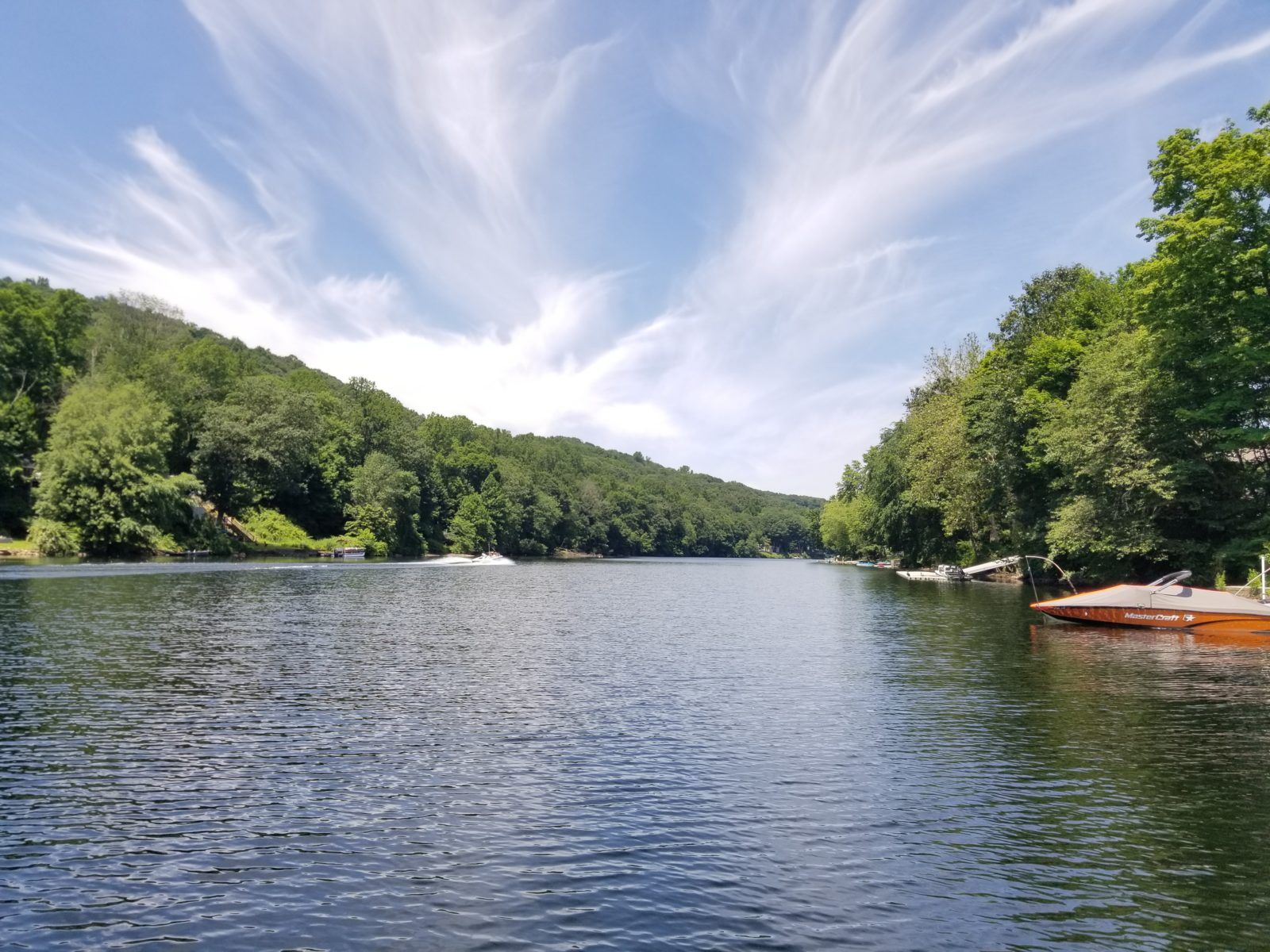Written by Gavin Ferris, Ecologist, SOLitude Lake Management
My cousins, brother, and I watched the old Farmall tractor putter out onto the ice. When it stopped at the center of the farm pond, my uncle climbed down from the seat, walked around, and jumped up and down in a few places. He then struck the ice several times with a golf club, returned to the tractor, and drove back off of the ice. Having supported the weight of the farm tractor and my uncle’s frame, and having withstood the savage blows he rained upon it, the ice was declared to be safe and we were allowed to start skating. I never did ask how he planned to get the tractor out of the pond if the ice had given way.

Venturing onto a frozen body of water is a dangerous enterprise, and should only be attempted when the ice is known to be thick, strong and solid. Even then, it is imperative to consider liability issues, emergency plans and preparation. Right now, much of the mid-Atlantic region is seeing temperatures colder than usual, even for January. As a result, many ponds that usually freeze only lightly, if at all, now have a thick layer of ice over their surfaces. This may seem like an ideal time for neighborhood skating parties and impromptu outdoor hockey games, but I urge you to take extreme caution and think carefully before you let people out onto the ice.
Stormwater ponds are designed to hold and then release water. This means that after the surface freezes, the water level beneath the ice could drop, leaving an air gap under the ice. Ice that is not directly on top of water is not safe, and should never be walked or skated on. Currents, springs, inflows or underwater structures in a pond can also cause thin spots in the ice. These weak areas may not be visible from above, but can be very dangerous. If any open water is visible, or if there is an active pond fountain or subsurface aerator, the entire surface of the ice should always be considered to be dangerous.
Last week I saw sled tracks that led down a pond’s steep bank and out onto the ice. I am quite certain that it was a lot of fun, but this is also a really bad idea. Coming down onto the ice with any amount of speed increases the chances that the ice will break, and the likelihood of someone not only going through the ice, but becoming trapped beneath it.
The safest course of action is to not let people onto your pond at all. Some municipalities and some insurance companies require or strongly encourage that ponds be fenced. There are upsides to fencing a pond. It certainly limits access to the pond. Signs are another option, but while someone might not notice or not read a sign, it is hard not to notice a four foot high fence. One thing to remember, however, is that a child might be much more able to scale a fence than an adult trying to reach children on the other side.
It may be years until we see weather like this again in this area, so I hope you do find ways to enjoy it. At the same time, please be careful, and make sure your winter fun is safe.
Gavin Ferris is an Ecologist for SOLitude Lake Management, based out of the Georgetown, DE office. He has a Master’s in Applied Ecology from the University of Delaware. During his undergraduate career at Clarion University of Pennsylvania, Gavin earned a bachelor’s degree in biology with a concentration in ecology and evolutionary biology. Gavin is a licensed aquatic pesticide applicator in DE, PA, NJ, MD, VA, WV, NC, SC as well as an Aquamaster trained service technician and a SePRO Preferred Applicator.
Learn more about SOLitude Lake Management’s team of lake and pond management professionals servicing the Eastern United States at www.solitudelakemanagement.com/team.










